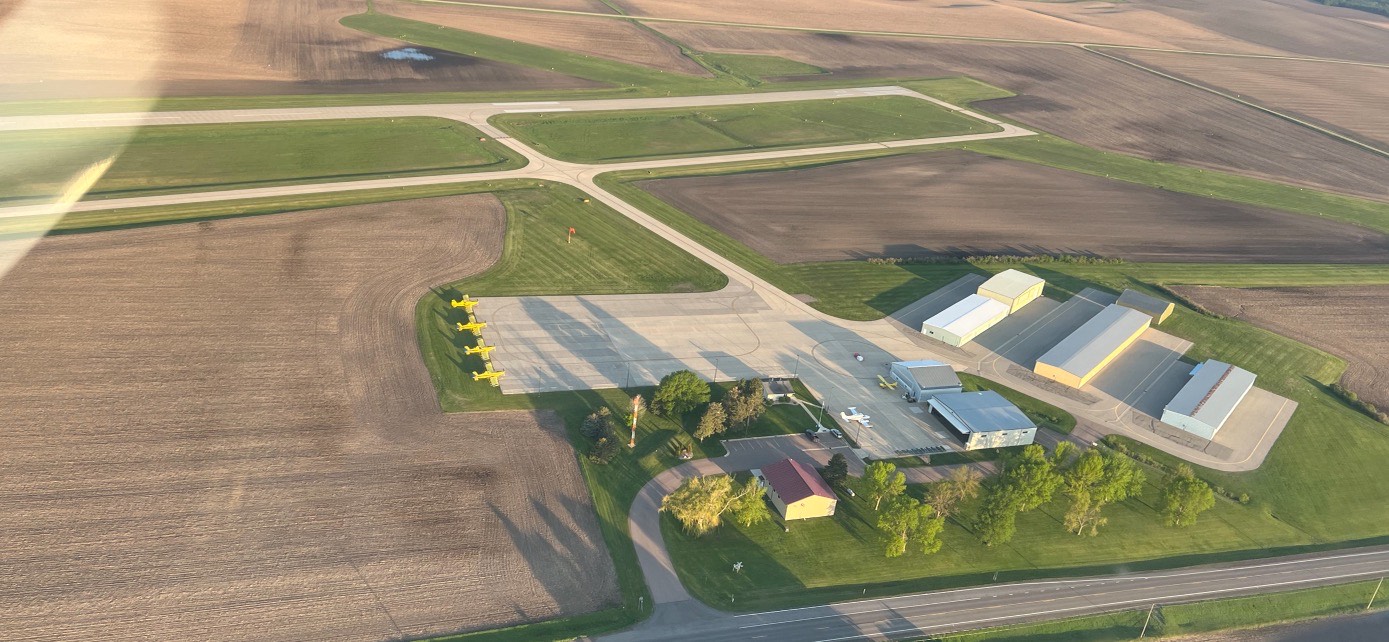
Roseau Municipal Airport (ROX)–Rudy Billberg Field is located two miles east of the city of Roseau, Minnesota, and about 10 miles south of the Canadian border. It is owned, operated, and maintained by the city.
Roseau’s first airport was opened in 1946 at a site west of the city and relocated to its current location in 1962. The airport has a 4,400-ft paved and lighted runway and taxiway and a 2500-ft grass strip. Services at the airport include a flight planning/arrival/departure building, heated and non-heated hangar space, paved parking apron with tie-downs, Jet A and 100LL fuel sales, block-heater outlets, and two courtesy vehicles.
Todd Peterson, community development coordinator for the City of Roseau, is also the airport manager. Peterson has worked for the city since 1996 and been involved with the airport since then, initially serving in a planning and capital improvements role.
Peterson’s experience in aviation is confined to base planning consulting work for the Air Force in a previous position with Nakata Planning Group. He assumed the position of airport manager when the airport’s fixed-base operator left in the early 2000s, Peterson says. “After 9/11, our airport, like many airports, saw a significant decline in general and recreational aviation. Our FBO found it increasingly difficult to continue… and moved on to work at a larger airport.”
Although his role as airport manager is only a small part of this position with the city, Peterson enjoys working with the pilots and operators who use the airport on a regular basis.
“Small-town airports typically are pretty unknown by most people who live in the community, so it is a bit of another world as people come and go from the airport,” he says.
The airport can be quiet, Peterson says, but its remote location makes it a vital link for both industry and healthcare. Since October 2015, Valley Med Flight has maintained a base for a helicopter at the airport and utilizes fixed-wing aircraft regularly for emergency transports. And Polaris Industries runs a business shuttle between the Twin Cities and its manufacturing facilities, which include Roseau. Besides running three to four KingAir aircraft a week into ROX, Polaris also regularly receives critical parts from delivery services when lines are shut down, Peterson says. Additionally, the Minnesota DNR has a fire watch rotor based at ROX for the spring and summer fire watch season.
The airport was named for Roseau native and Minnesota Aviation Hall of Fame inductee Rudy Billberg, an early aviation pioneer, barnstormer, bush pilot, and WWII flight instructor. Billberg also coauthored a book, In the Shadow of Eagles, about his flying adventures in Minnesota and Alaska.
In the last few years, Peterson has noticed a decline in recreational and general aviation traffic. “We have a T-hangar full of dusty planes,” he says. “Without our business commuter and delivery traffic along with air ambulance traffic, our airport would be very quiet.” He adds that business and healthcare users don’t service their planes locally, “so it is hard to justify any full-time FBO/management at our airport.”
So it makes sense that the airport’s biggest challenge right now is generating additional traffic to support needed improvement, which in turns supports additional traffic. “If you don’t have a modern airport, you won’t get the modern aircraft. So it is really critical to keep your airport current and relevant, but that costs a lot of money.”
Peterson notes that over the last five years, the city, state, and FAA have invested heavily to modernize the airport to improve runway approaches. Among the improvements are complete reconstruction of the airport’s main hangar, arrival/departure building, parking apron, and fuel system. This summer, a MALSF approach lighting system will be installed on Runway 16, improving approach minimums. “It has been a very busy five years,” he says. “We are now able to better serve and accommodate the larger aircraft required by our users.”

